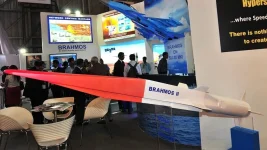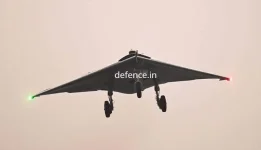- Views: 2K
- Replies: 11
The Defence Research and Development Organisation (DRDO) has been instructed to fast-track the development of its advanced Ballistic Missile Defence (BMD) Phase-II system.
This strategic move aims to bolster India's protective shield against potential Intermediate-Range Ballistic Missile (IRBM) and Medium-Range Ballistic Missile (MRBM) attacks from Pakistan, particularly targeting major urban centres like the Delhi-NCR region.
The directive underscores India's proactive stance in upgrading its multi-layered air defence capabilities, especially as the initial phase of its BMD system is already being deployed.
The urgency follows recent incidents where Pakistan reportedly utilised Short-Range Ballistic Missiles (SRBMs), specifically identified as the HATF-I (with a reported range of up to 100 km) and the Fatah-II (a guided multiple rocket launcher with a variant claiming a 400 km range).
According to official sources, these incoming threats were effectively neutralised by India’s indigenous Akash surface-to-air missile system and the Medium-Range Surface-to-Air Missile (MR-SAM) systems.
The Akash system is designed to engage aerial threats like jets, drones, and missiles up to an altitude of 20 km and a range of 25-45 km, while the MR-SAM, a joint Indo-Israeli venture, offers protection against a variety of aerial targets, including missiles and aircraft, at ranges up to 70-100 km.
While these successful interceptions demonstrate India's current air defence proficiency, there are growing concerns within the defence establishment about Pakistan's potential deployment of more sophisticated IRBMs, such as its Shaheen series (with variants like Shaheen-III reportedly capable of reaching 2,750 km).
India's currently deploying BMD Phase-I system is engineered to intercept and eliminate hostile missiles with ranges up to 2,000 km, which provides a counter to Pakistan's existing Shaheen series IRBMs.
However, Indian defence planners are anticipating a strategic escalation where Pakistan might employ longer-range MRBMs in an attempt to saturate and overcome India's present defensive measures. This foresight into potential future threats is the primary driver for the expedited development of the BMD Phase-II.
This next-generation system is being designed to engage and neutralise more advanced and longer-range missile threats, including MRBMs, which generally have ranges between 3,000 and 5,500 km.
It has been confirmed that India's BMD Phase-I interceptors were activated during the recent confrontations. However, they were not required to engage targets as the Akash and MR-SAM systems proved highly effective in dealing with the SRBMs launched by Pakistan.
This operational outcome highlights the robustness of India’s layered air defence architecture, where systems like Akash and MR-SAM constitute the initial tiers of defence, with the more advanced BMD Phase-I providing a crucial shield against higher-altitude and longer-range ballistic missile threats.
A layered defence strategy is critical as it provides multiple opportunities to intercept incoming threats at different altitudes and ranges, significantly increasing the overall probability of a successful defence.
The BMD Phase-II program aims to significantly upgrade India’s missile defence capabilities.
While Phase-I focuses on intercepting missiles within the earth's atmosphere (endo-atmospheric) and in the lower exo-atmospheric regions (just outside the atmosphere), Phase-II is being developed to provide a more comprehensive defence.
This includes the capability to neutralise MRBMs and other advanced threats at higher exo-atmospheric altitudes. Intercepting threats outside the atmosphere provides more reaction time and can mitigate the effects of warheads over a wider area.
The successful development and deployment of Phase-II are considered vital for ensuring the security of critical metropolitan areas, including the Delhi-NCR, which are often viewed as high-value targets in conflict scenarios.
The AD-1 missile, part of Phase-II, is a long-range interceptor designed for both low exo-atmospheric and endo-atmospheric interception of long-range ballistic missiles and aircraft, and has undergone successful testing.
The accelerated work by DRDO on the BMD Phase-II system underscores India's firm commitment to maintaining a technological advantage and robust defence posture in the region.
As neighbouring countries continue to advance their missile arsenals, India's comprehensive, multi-layered defence strategy—integrating indigenous systems like Akash and MR-SAM with the evolving BMD program—is crucial for deterring and, if necessary, defeating future missile threats.
The proven success of current air defence systems, combined with the rapid progress in developing Phase-II capabilities, signals India's preparedness to counter any escalation in missile warfare and safeguard its national interests.



